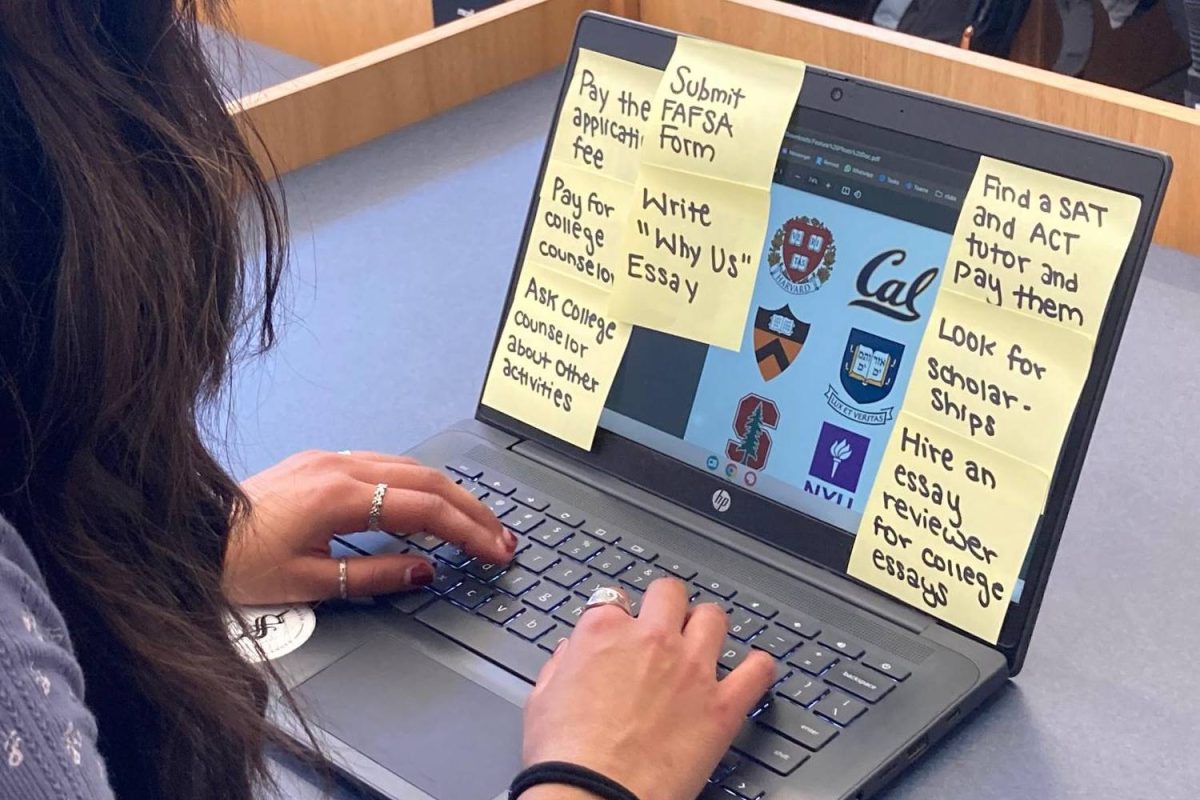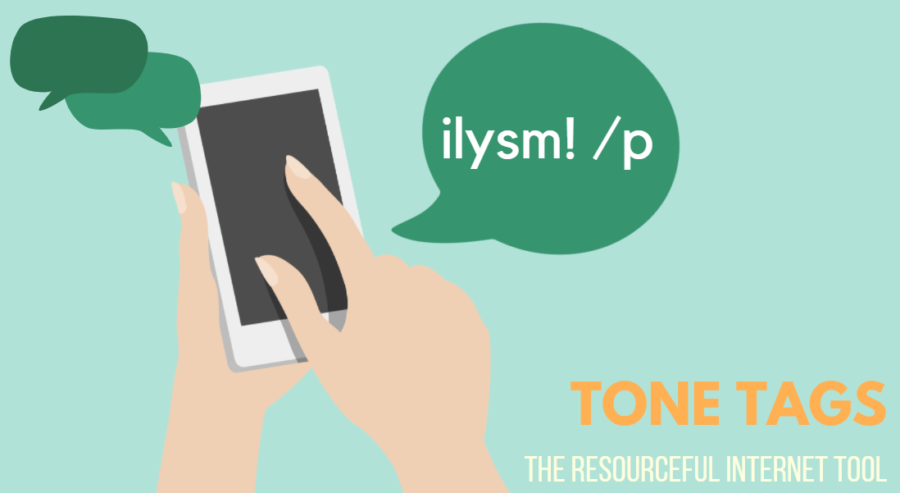Senior Marina Ashurkoff sits in their living room at home, tapping away at their phone while texting a friend. A smirk widens across their face as they exchange each message. “You’re the worst. /nsrs.” Their classic grin could’ve been misconstrued as a troubled frown without a label they added at the end of the message: a tone tag. “It helps to clarify your message and make sure that it’s expressed clearly over text,” Ashurkoff said.
Reading a simple text message could be understood — or misunderstood — in a variety of ways. A message from your friend saying “I need to see you” could either be taken as a vicious, threatening message or a lighthearted, saudade request. With more forms of technology and social media developing, it’s important that we identify a system to ensure a strong form of communication and avoid any misleading or conflicting tones.
It’s pretty simple with the use of tone tags.
Tone, a term tossed about in English classrooms, is a subjective question, where students attempt to form their own opinions or beliefs about an author’s feelings based on their writing.
Just like reading a book and figuring out the author’s tone, having a conversation with a person through text can be more difficult than having an in-person conversation. The tone read through messages can be easily confused, and the respondent may take the tone of a message in a whole different direction than what the sender may have originally intended.
Neurodivergent Communication — Making it Simple
While most texters have had a digital communication disaster at some point, deciphering tone can be especially difficult for those who struggle with understanding emotions in general.
According to psychologists Brett Heasman and Alex Gillespie, “autistic people experience lifelong difficulties in social interaction; [however], different contextual features of interactions can help to extend or limit possibilities for intersubjectivity.” For example, individuals who are neurodivergent (on the autism spectrum or dyslexic) may have a difficult time understanding the emotions or feelings conveyed in a digital message, but with guidance and the use of tone tags, they can easily eliminate those challenges.
Ashurkoff began using tone tags after being introduced to them by a friend who is neurodivergent. They now consistently use tone tags to communicate effectively with their peers online. “Using something that makes it easier for them to understand me is something I’m perfectly willing to do as a friend,” Ashurkoff said. “It helps foster positive relationships and understanding of what someone else is saying.”
Tone tags provide a stronger structure of communication. “[If] someone just reads the text and they can’t see your facial expression and they can’t see those cues, that can really lead to some serious problems,” Ashurkoff said. “Especially if people are having trouble communicating over text, using tags is a great way to get rid of that issue.”

Learning Tone Tags
Tone tags are labels on messages, typically at the end, to determine the type of tone a message is meant to convey.
Using our previous example, your friend texting “I need to see you” could be fixed with a tone tag to determine its meaning. If your friend needs to see you for a serious matter, they would attach a “/srs” tag at the end.
This small clarification could make texting more straightforward. It’s a simple task to have an effective conversation, especially if messages are subtle or ironic. “It’s important to have [a] tone tag there so that people know I’m being sarcastic,” Ashkuroff said. “If that’s taken seriously, you’re hurting someone’s feelings, and [that could] cause general harm to a friendship or relationship.”
Critics may argue that tone tags can be complicated or used incorrectly. Memorizing the entire list of tone tags could seem useless just to communicate with someone online, especially if people misuse them, causing mixed messages and possible frustration between the respondents.
However, tone tags aren’t meant to be used constantly. Preferably, they should be used to direct the tone you’re using when you state something that can be understood in multiple ways. It can be tricky to grasp the concept at first, but once you adjust and understand what each label means, it begins to make more sense.
For example, maybe you wouldn’t add a tone tag when asking your mom to pick you up from school, but you may add a “/j” tone tag when telling your mom that you “failed your exam” when you really just got a B.
Tone tags truly depend on the subject of the conversation or who you’re talking to. Maybe one friend needs a tone indicator to understand the feelings conveyed in your message, while a different friend is able to comprehend what you’re saying and how you feel without a tone tag.
Furthermore, the misuage of tone tags can be frustrating. Tone tags should be used professionally to avoid miscommunication while in a conversation. An example of misuse is “you are such an idiot! /pos”. “/pos” is meant to promote a positive and upbeat tone, but suggesting a negative phrase can cause miscommunication in tone regarding your message. You may have a lighthearted, aggressive relationship with your friend, but in general, these misuses can carry a heavy weight.
Tone tags are meant to be seen as a friendly internet tool. They should be used more regularly to help promote the tone and feelings in a message that may be difficult to comprehend. As technology adapts, conversations will become more accessible for all responders to feel engaged and unified on social media and on the internet.
This story was originally published on The Blaze on February 3, 2022.

































